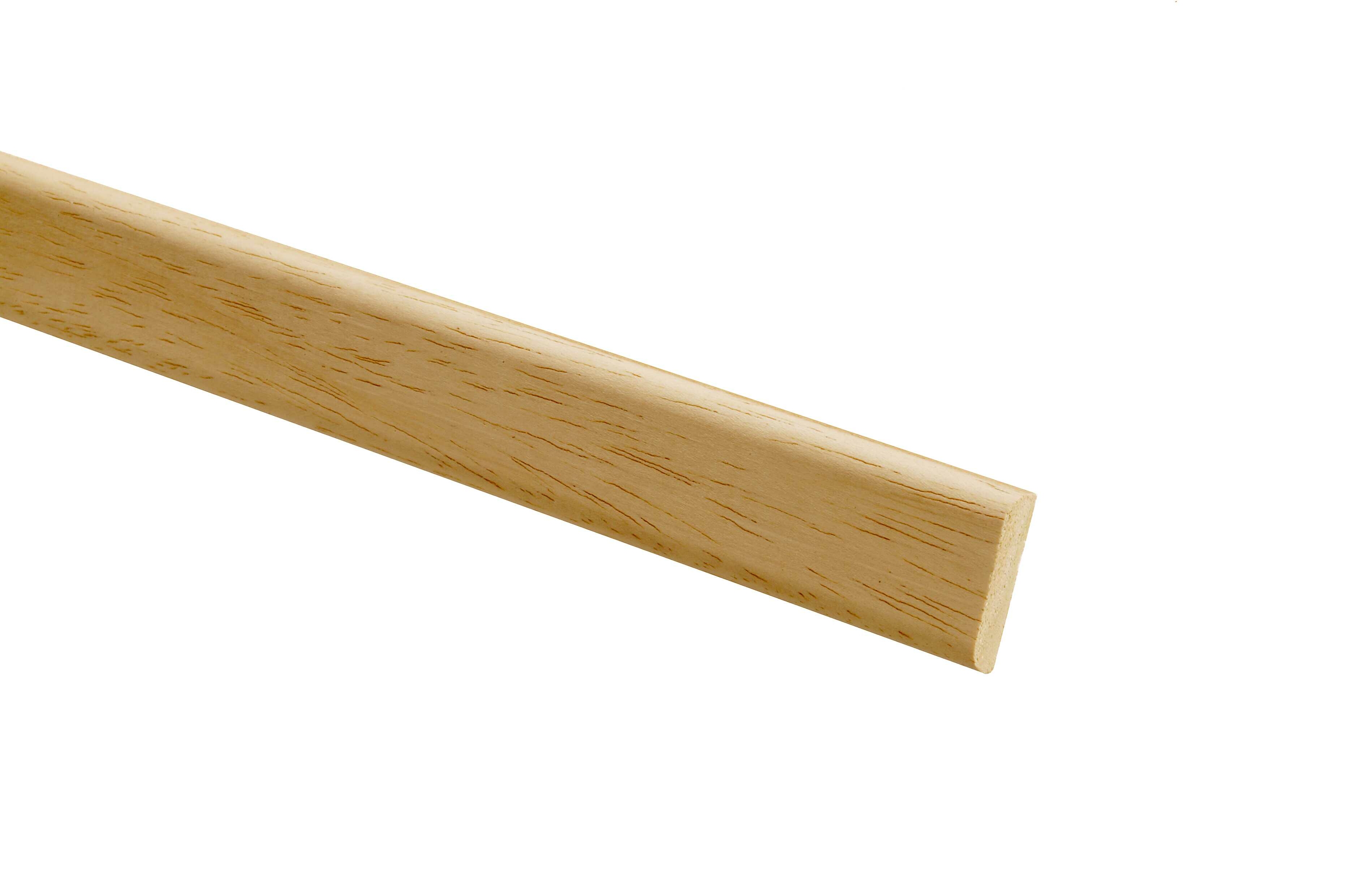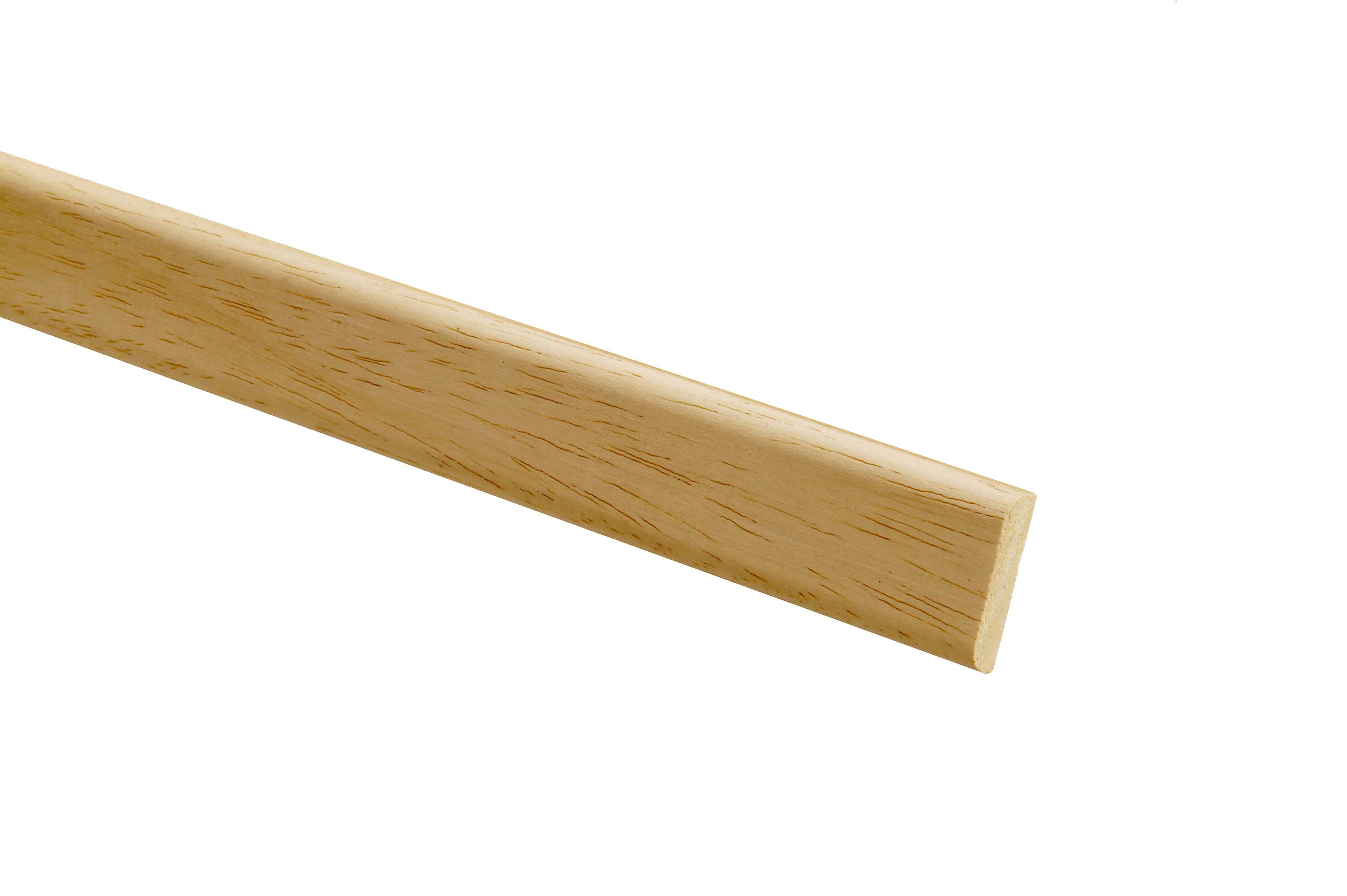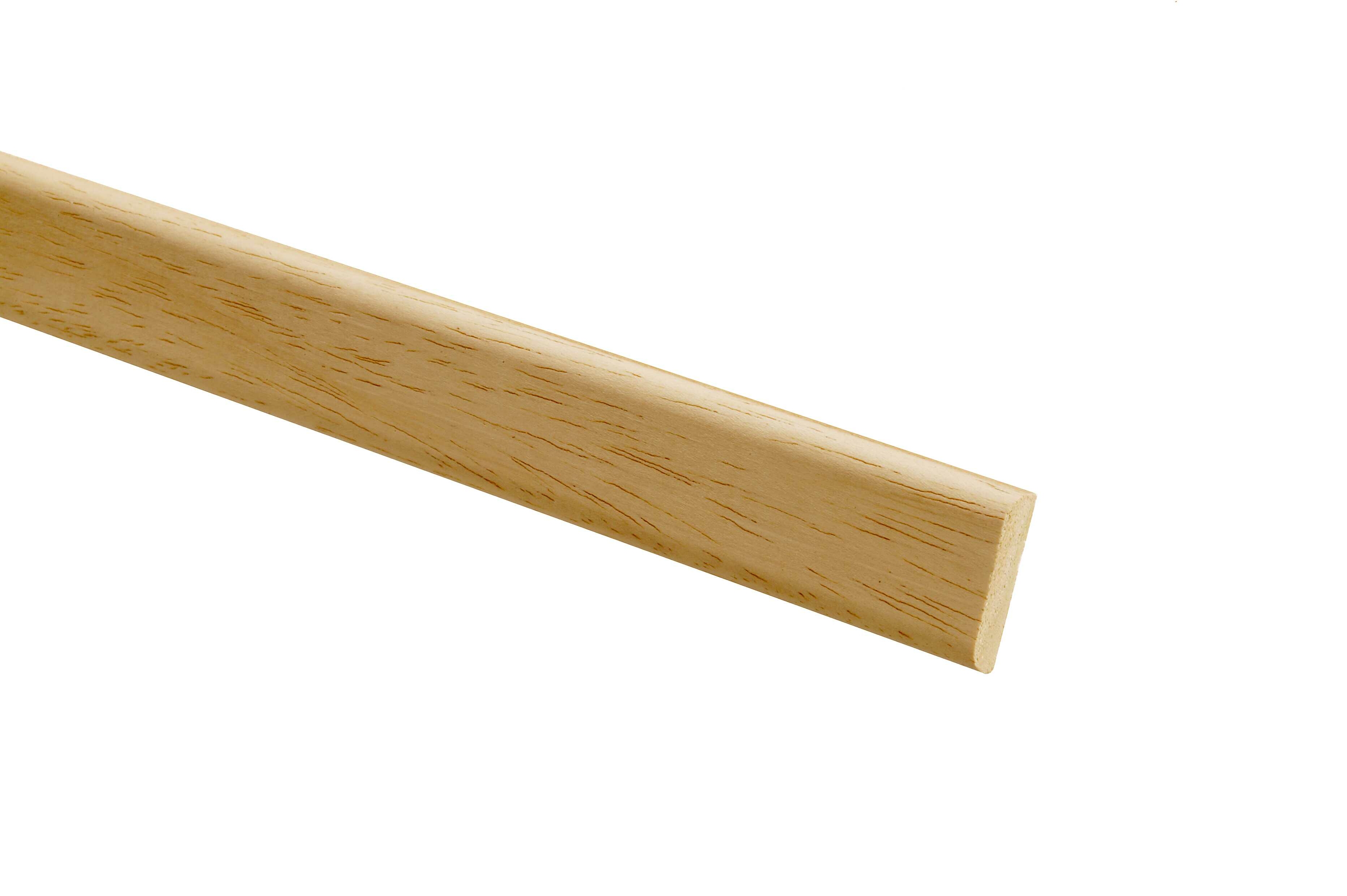20 Light Hardwood D-Shape Mouldings 6 x 31 x 2400mm
Specification
| Material | Light Hardwood |
| Height | 31mm |
| Length | 2400mm |
| Depth | 6mm |
| Pack Weight | 4.670 Kg |
| Product Type | D Shape |
| Unit of Measure | Pack |
| Pack Quantity | 20 |
Not sure if this is right for your home?
Speak to a designer with our free design service which can help you plan your perfect layout and check compatibility.
Free Design ServiceProduct Description
- Manufactured from high quality light hardwood, a more durable alternative to softwood.
- Easy and effortless to fit using adhesive, pins, or screws.
- The planed finish makes it easy to paint, oil, wax, stain or varnish to complement your interior design.
- High quality, hardwearing and durable.
Be Inspired
Our top tips, advice and testimonials to help you get the best out of Richard Burbidge products. Discover our range and find everything from inspiration and ideas to installation and maintenance advice.
Mouldings FAQs
Can I install Richard Burbidge mouldings myself?
Richard Burbidge mouldings are designed so that they can be fitted by any competent DIY-er. Our mouldings are easy to work with while providing the highest quality. Each month we release a new step-by-step how to guide, giving you inspiration on how you can transform your home with Richard Burbidge mouldings. Our mouldings how to guides can be found here, check back every month for a new DIY challenge.
Can you replace window beading?
Yes, window beading can be replaced if it becomes damaged or you want to update your window's look. Simply remove the old beading by prying it off gently, clean up any adhesive or nails and install the new beading. Whether you’re updating to a different style or fixing damage, window beading replacement is a simple and effective way to refresh the appearance of your windows.
How much architrave per door?
The amount of architrave you’ll need depends on the size of the door and the style of moulding. Generally, you'll need about 3 metres (10 feet) of architrave to frame a standard-sized door, with extra for any intricate cuts. For larger doors, you might need more. It’s always best to measure your door frame first and buy a little extra, just in case!
How to cut beading at an angle?
Cutting beading at an angle can be done with a mitre saw or a hand saw. For precise cuts, ensure you measure the angle you want to achieve. Typically, a 45° angle works for corners, but you can adjust depending on the look you're after. Use a spirit level or protractor for accuracy. Always double-check your measurements before cutting to ensure a clean fit.
How to cut window beading?
Cutting window beading is much like cutting any other type of trim. Measure the length you need, mark the beading and use a mitre saw for angled cuts at corners. Make sure your cuts are straight and clean. If you’re using more ornate beading, always double-check the profile shape to ensure a perfect fit at the corners.
How to do scotia corners?
To fit scotia corners, you'll need to make angled cuts to ensure the trim fits neatly around corners. The easiest way to do this is by using a mitre saw to cut each piece of scotia at a 45° angle at the corner where the two lengths meet. Be sure to measure accurately, as any gaps or misaligned corners will be visible. Once cut, apply adhesive to the back of the scotia and press it firmly into place. For a clean look, use filler to smooth out any gaps before painting or finishing.
How to fit an architrave around a door?
Fitting architrave around a door is straightforward with the right tools. Start by measuring the door frame, then cut your architrave to the correct lengths. Use a mitre saw for neat, angled cuts at the corners (typically 45° angles). Apply adhesive to the back of the architrave, press it into place and secure it with nails or a finish gun. Finally, fill any gaps with caulk or filler and sand smooth.
How to fit wooden window beading?
Fitting wooden window beading is simple with the right tools. Start by measuring the window frame and cutting the beading to the correct length. Use a mitre saw for angled cuts at the corners. Apply adhesive to the back of the beading, press it into place and secure it with nails or a finish gun for a smooth finish. Once in place, you can caulk the edges.
Is architrave the same as skirting?
No, architrave and skirting are different types of moulding, though both add a decorative finish to a room. Architrave is specifically used around door frames or windows, giving a neat edge. Skirting (or baseboard) runs along the bottom of the walls, covering the gap between the floor and the wall. While both are trims, they serve different purposes in your home’s design.
Should architrave match skirting?
While it’s not a strict rule, matching your architrave to your skirting can create a more consistent look throughout the room. If you prefer a more traditional aesthetic, we recommend matching the two. Mixing different styles can also work for your home aesthetic, for example, you could use a more decorative architrave and a simpler skirting, which adds contrast to the space. The key is to maintain a cohesive overall design that you love.
Should window beading match the floor or skirting?
While it’s not a strict rule, it is recommended to match your window beading to the colour of your skirting rather than the floor to create a harmonious look throughout the room.
What are mouldings used for?
Mouldings are extremely versatile and can be used for many DIY projects around your home. Mouldings can be used to apply decorative features to your home, hide gaps or joints in woodwork, add practical features to a room, such as a protective dado rail or used in woodworking joints. View our mouldings collections here.
What is Scotia trim?
Scotia trim is a type of decorative moulding often used to cover the gap between the floor and the wall, especially in areas where the floor meets a curved or uneven surface, which typically arises when laminate or wooden flooring is used. It has a concave, curved profile, which helps to transition smoothly between surfaces and adds a finished look. Scotia is typically used in place of traditional skirting boards when a more subtle, streamlined effect is desired.
Floor mouldings, including scotia trim, can also be installed against existing skirting boards, offering an easy and effective way to achieve a polished look without removing the skirting.
What is a wood quadrant?
A wood quadrant is a type of moulding with a rounded, quarter-circle profile, often used to cover the joint where two surfaces meet. It’s commonly used in corners where walls meet the floor, ceiling, or around door frames. The curved edge of quadrant moulding adds a decorative touch and helps hide gaps or imperfections in the corner. It’s a versatile trim that works well in traditional and modern interiors.
What is quadrant trim used for?
A quadrant trim is used to cover joints in corners where two surfaces meet, such as where a wall meets the floor or around window and door frames. It is used to tidy up transitions between different materials or finishes, providing a clean and polished look. The rounded shape of a quadrant trim softens sharp angles and provides a finished and refined appearance. They are typically used in living areas, bathrooms or hallways.
What is window beading?
Window beading is a decorative trim applied around the edges of windows. It serves both functional and aesthetic purposes. The beading holds the window in place within the frame and provides a finished polished look. It can come in various styles, depending on the look you want to achieve for your home.











